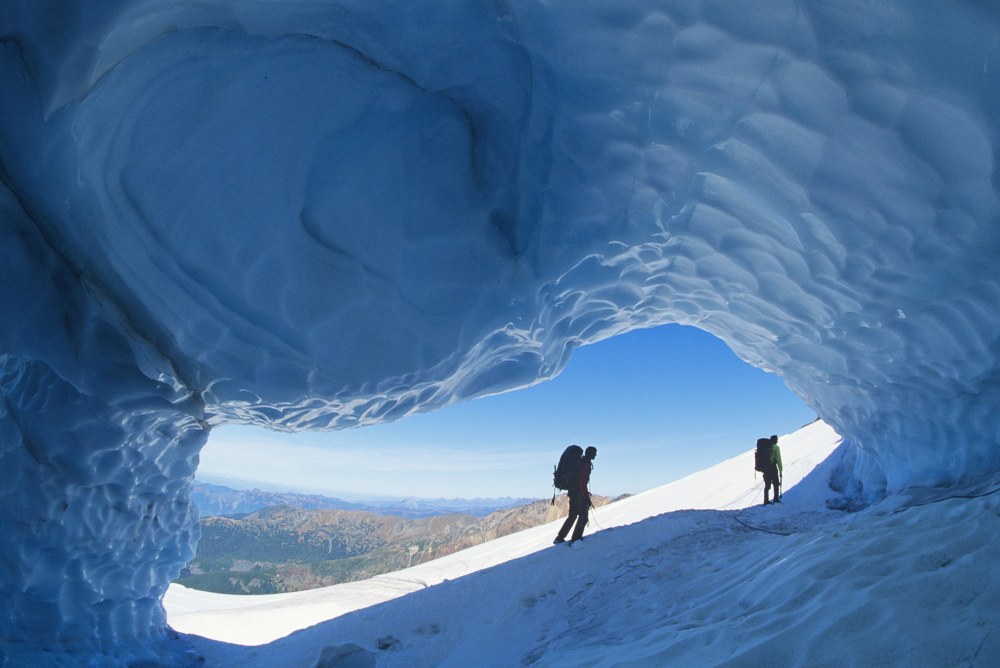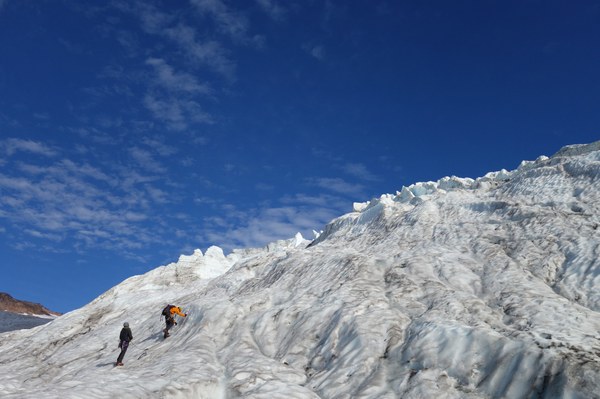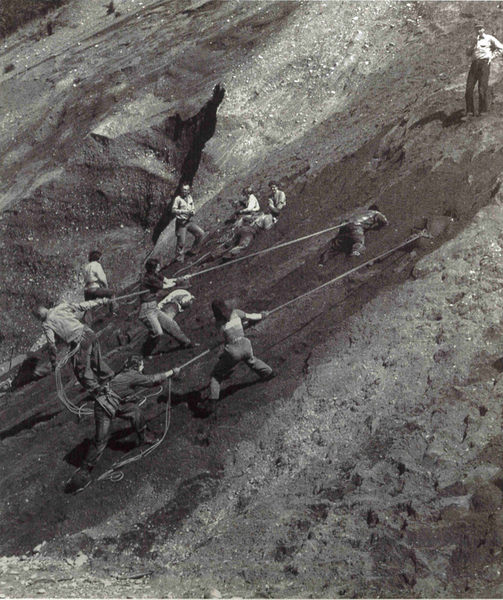
Alan Kearney and his posse of bell-bottom clad buddies are obsessed with buildering. All the rage in 1973, ‘buildering’ is the art of bouldering on urban infrastructure, or in lay terms, climbing up a building. Inspired by the emerging ice climbers in the Alps, Alan and crew want to take their new passion a step further by buildering on ice. They look for ice anywhere they can find it, and stumble across a 15-foot frozen wall behind a local meat market in the dark of night. Ice axes in hand, they anchor a top-rope to a fence post and begin to climb. To call them “ice climbers” would be an overstatement, but they have a blast regardless. Ice buildering, as it turns out, is just as fun as they had imagined.
The triumphant climbers return the next morning to examine the wall in its full glory. By the light of day, they notice a strange discoloration to the ice, then, the broken septic pipe. They’d been climbing on frozen sewage. Fast forward 50 years, and today climate change is melting Alan’s favorite ice climbing. Could urban ice buildering be the future of outdoor recreation?
Ice climbing and adaptability
Alan, who has since abandoned sewage climbing for more pristine ice, is a 20-year member and leader for Bellingham’s Basic Alpine Climbing program largely responsible for introducing ice climbing into Bellingham’s curriculum. During his early climbing days, ice climbing was not at the level of popularity that it is today and “people weren't climbing a pitch of ice for the sake of ice.”
But Alan fell in love with ice and made sure that the Bellingham climbing program did too.
While changing conditions are amplifying as a result of a changing climate, unpredictability has always been imbedded in the mountain. One of Alan’s principal messages to students is the variability inherent in ice climbing. When in the field, climbers are ideally looking for bare and exposed ice unobscured by seasonal snowpack. Often, a large layer of powder can make the ice difficult to access, or a heavy crust of snow overlaying the ice may be frozen over altogether. On top of that, Mother Nature’s mood is not one to be tested, and months of trip planning can be derailed by a bad weather window.
 Ice climbers at Coleman Glacier. Photo by Emma Agosta.
Ice climbers at Coleman Glacier. Photo by Emma Agosta.
Although inconvenient, Alan believes this variability is what better prepares recreationists for more challenging alpine climbs. “In the big mountains, conditions are all over the place,” he said. “You can’t go and expect there to be perfect rock and perfect ice.” Glaciers change, weather shifts, snowbridges collapse, and just because a feature was present the previous year doesn’t mean it can be relied upon the next. In the world of climbing, adaptability is your friend.
Challenges to our climbing programs
Faced with a changing environment, The Mountaineers are confronted with the difficult challenge of adjusting our programs and reimagining how and where we recreate. Jerry Logan, 10-year member and Chair of Kitsap’s Intermediate Climbing program, is one of many climbing leaders disappointed to discover the loss of a popular ice climbing route this year: Observation Rock. Observation Rock has long been a favorite because of the amount of exposed ice providing excellent teaching and climbing conditions. It was also the most easily-accessible multi-pitch ice climb for beginners.
Like all ice climbing areas, Observation Rock’s usability varied by year depending on snowfall, but this year was the first that all the ice melted away completely. “This was the first time that it was very obvious to me that the changing climate resulted in the loss of ice climbs,” Jerry said. “It was a ‘wow’ kind of moment that was very in-your-face as opposed to theoretical.”
Alan has also been experiencing challenges with the Bellingham climbing program. One of the realities that weighs heavily on his heart is the rapidly shrinking alpine glaciers, which he’s been photographing to track seasonal changes for over 40 years. “I feel like they are friends,” he said about his relationship to glacial landscapes. “And I think that a lot of us, when the smaller [glaciers] are gone, will be really sad.” In Bellingham, the best place to teach Alpine Ice is the Coleman Glacier, which was inaccessible last year due to washout. Easton Glacier offered an alternative, but last year experienced slightly higher snowfall and not enough ice. Conditions were not ideal, but Alan and his students did the field trip anyway. As Alan reasons, in the face of unpredictable conditions, “you just have to adapt.”
 Basic Climbing students in the 1950s practicing self-arrest on a sand and gravel pit. Photo by Paul Wiseman.
Basic Climbing students in the 1950s practicing self-arrest on a sand and gravel pit. Photo by Paul Wiseman.
Embracing adaptation
Adapting is nothing new for The Mountaineers, and history can attest that we’re actually quite good at it. In 2015, the Pacific Northwest experienced record breaking low snowfall that prevented the Tacoma Basic Alpine Climbing Course students from having an appropriate place to practice self-arrest. Serendipitously, they stumbled across a 1950s archive of Mountaineers practicing self-arrest on a sand pile. Inspired by the resourcefulness, the Tacoma students, with the generous aid of Lynch Creek Quarry, took to the sands. The field trip was described as a “huge success” with “remarkably realistic” conditions. Sand piles pale in comparison to a glacier, but when conditions call for it, Mountaineers can climb anything.
Other innovative forms of recreation are also gaining traction. Buildering is experiencing a renaissance, and this year’s Banff Film Festival featured two climbing pros scaling the underside of a 2,600-foot long bridge using nothing but trad climbing gear and ingenuity. They described the sport as “almost better than real climbing.” Gravel pits, bridge interstices, mysterious frozen walls—the possibilities are endless.
Our favorite outdoor places are not replaceable, and alternative forms of recreation may fall short in replicating the natural phenomena that bring us so much awe. But they can still provide an occasion for people to come together in community. They can still offer an opportunity to adventure in new areas while lessening recreational traffic on public lands. And, hopefully, they can still preserve some of the charm that drew us outside in the first place.
Imagining alternative approaches to recreation is not a means to disparage the weight of climate change and the intense alterations it will bring to our lives. Rather, it’s an attempt to envision what lies at the periphery of possibility. Witnessing changes to our public lands will be challenging, but challenges like these are usually the impetus for unimaginable innovation. So find your bridges, fall down your sand mounds, scale your frozen buildings… just make sure you check for any leaking sewage pipes.
This article originally appeared in our spring 2023 issue of Mountaineer magazine. To view the original article in magazine form and read more stories from our publication, visit our magazine archive.
 Skye Michel
Skye Michel